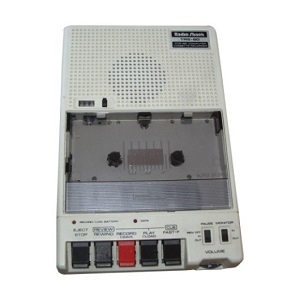Featured Image from http://www.cray.com/company/history/seymour-cray
Over a year ago, I decided to start blogging about anything and everything related to my career, computers, science, and so forth. I truly had no idea with how best to describe these pages I would arbitrarily type out into “one word”.
At the time I was heavily involved with XenServer, which is still a passion of mine, but even that wasn’t a singular subject.
I wanted to explain my mindset, my exposure to art, music, literature, computers, and so many fields I had the privilege growing up to dabble in. So, I thought about Seymour Cray: my personal computer idol who is synonymous with Super Computing, but always seemed to me as a man of a diverse background who used those experiences to achieve many things.
“No Prior Art: A Dedication” was originally written as a draft on 31-JUL-2015. Its intention was to, well, be some sort of point for you – the reader – to learn a bit about my computing hero as well as offering a means to tie in personal experiences related to the computer industry. I suppose it was a complex idea as I am nothing like Seymour Cray, but the likes of Titans such as him have paved the way for us involved in the widening spectrum called “computing”.
I didn’t finish the draft for lack of time and fear it would be overlooked, but without Seymour Cray, well, I can say my father, brother, and myself wouldn’t be here. No, instead we would be probably be broke comedians pan-handling for our next meal.
So, over a year later I present this entry with a title dedicated to one of the many patents Cray held as, in reading the verbiage, the patent stated “No Prior Art”. I found that text to be quite apropos to enforce who Seymour Cray was, is, and left us. Indeed, no prior art nor subsequent art, for sure.
So I have a blog…
I have broken my own promise and the proof is right here. A blog. About blogging. About technology. About technology that begat technology and so forth.
I made such a promise during my on-and-off college days as I was kicked out of class as a “blog” was discussed as being a “technology”. I mean that literally: Blog = Technology. With years of experience as a musician, artist, writer, and life-long computer geek, I stared in awe at the classroom that soaked this up. There was no judgement of the students on my part as the took copious notes, but I was shocked after three-quarters of the class passed by and there was no mention to the actual technology that allowed for mouth pieces to talk about their political leanings on-line.
When I asked how we could learn this as truth without the underlying technology required to facilitate “a blog” (a web server, CGI components, databases, code, etc), a mild argument broke out as I found such concepts were “outside the course’s scope”. Being asked to leave for the day on my insistence that a blog was not a technology, but a made up word to describe an amalgamation of literal technology, I gladly left with a grand sense of accomplishment. I was correct, though I didn’t want to be, but the professor knew it and four of my colleagues would later call me for all of us to have a weekend session of actually exploring what a blog was, what would be required to setup one, and so forth.
I was no superhero. I am not a superhero. I am someone who believes in being taught a subject, but also that which allowed for such work to exist: credit to the shoulders of giants we stand upon.
This is what the purpose of my blog is, albeit it has a lean towards open source XenServer and virtualization, but I hope this translates to my readers. My desire is that what I content I can find to write helps others, promotes discussions, and not just necessarily “things” specific to virtualization, etc. After all, when I am long gone, maybe I can leave some indexed content in a futuristic world. That may sound morbid, but married to a genius wife and having two exceptionally intelligent kids, it is the least I owe them during this lifetime I have been given.
Looking up to Cray…
Real heroes and legends didn’t need a blog (nor would they need a blog). Their life’s work is known or unknown, but never-the-less permeates throughout the fabric of our planet.
Martin Luther King, Jr. Sir Isaac Newton. Salvador Dali. John Oppenheimer. Houdini. Jonas Salk. Albert Einstein. Jane Goodall.
A list of names such as these and their contributions can seem to go on forever as I look around my library. That’s the problem. I shouldn’t be looking at these individuals as a list-style compilation. Really, to imply such individuals listed above, their contemporaries, and so many more are an just an infinite who walked among us is to make the no more than mere mortals.
That is the opposite of my intentions here, for surely the scrolls of history should have a specific compendium for these individuals for us to always think back on and pay homage to. Their very existence before, during, or after our lives defined history and their spirit? They are still alive and live on as Immortals, such as one of my heroes who’s intelligent face is sprawled across the top of this article: Seymour Cray.
Man, Myth, and Legends…
If the name sounds familiar, let’s see if I can’t jog memories with some actual Seymour Cray references. Some are well known, some are not, and some may still be myth for all I know!
- The Cray Computer
- He and Douglas Englebart (spelling) helped to design the first “desktop” computer (1975’s Altair)
- His super computers held speed records over larger companies, such as IBM
- “NASA has all the Cray’s,” or at least all us kids thought so. NASA did utilize Cray machines: check out the NASA STI Program video here
- Tom Watson (IBM) was out engineered by a team of 30 (thus we have to reference The Mythical Man-Month)
I could carry on as even being a small kid with a father who entered electronics pre-desktop, pro-mainframe, and so forth, rumors of the Cray Super Computer were the stuff of legends to us! I even had a classmate in third grade who claimed his dad had a Cray Computer to which other kids said “No Way! NASA has them all!” to which made me want to finish my homework early, work on my mostly-soldered Apple ][+ and change the world.
After all, it has been reported than when Seymour Cray was told Steve Jobs purchased a Cray computer to design the Apple, he replied:
“Funny. I am using the Apple to simulate a Cray-3.” -Seymour Cray, Source Unknown
I love his sense of humor as it is one that has been lost as invention led to industry and industry led to harsh competition, closed knowledge loops, and a pay-to-play mentality.
Surprisingly, I’ve never read a biography on Seymour Cray. The primary reason for this is that, well, thanks to my father, his friends, and others with much more time in the computer industry, I’ve been told so much about Seymour Cray that I don’t feel the need to over analyze him. That seems to be something that, outside of engineering, Seymour Cray himself wouldn’t do.
The second reason is that which is myth, such as the famous definition of what the acronym in RISC processing really means:
Really Invented by Seymour Cray
Of course RISC means Reduced Instruction Set, but we are talking about a man who would build the Super Computer, deliver it, and even build or customize the the hardware/OS per user needs. Imagine that. Seriously, it is a divine picture of a man who could really build something so massive and wield it like he was a god.
Beyond work with processing, semi-conductors, and large compute systems, it seems Seymour Cray had a humility about him and was always full of great quotes that to this day, I’ve heard so many project managers use without attribution to Seymour Cray. Having an electrical engineering degree, two masters degrees in mathematics: he was made to be in the right place at the right time in the annals of history.
He wasn’t a fan of symmetrical processing as I understood it. The quotes passed on to me were “why go symmetrical without high serial speeds” and that “parity is for farmers” — these made me laugh, but made complete sense. Sure, we have symmetrical processing, but during the early days – from my own experience – he was right. Dirty copper, faulty designs, and details such as distance causing inconsistent performance.
There is little footage of such an influence over our industry, but thanks to Computer History, I have found two wonderful videos that offer us a view into Seymour Cray, who he was, and how it must have been wonderful to work for him.
“What’s All This About Gallium Arsenide?” – A lecture by Seymour Cray
Cray-1 Supercomputer: 30th Anniversary
A story closer to me…
Finally, as an IBMer, I heard the stories that never changed and can be backed up by many of Cray’s clever quotes and by proxy, the book I previously mentioned (albeit published in 1975 and related to the IBM/360) entitled “The Mythical Man-Month” by Frederick P. Brooks. Copies of that book were almost mandatory reading as one adopted to the IBM culture as the famous I recall goes something like this:
Thomas Watson, the then-CEO of IBM, was completely flabbergasted how Seymour Cray and Control Data Corporation (click here for a bit more on CDC) were ableto out engineer and produce 6600, the World’s fastest computer (by FAR) during the 1960s. According to Seymour Cray, CDC had a project group of 30 (including the janitor, per Cray) and in sharing letters, etc, it was determined IBM had allocated 10 times the man power CDC did and they still failed to achieve their goals.
That always fascinated me. He wasn’t just a technical genius, but a planning genius. I did look into this when I was younger and as I recall (when asked about how many people were involved on the CDC’s 6600 project), Cray replied:
“I think thirty. Including the janitor.” -Seymour Cray, Source Unknown
The following picture is a dual installation of the CDC 6600 supercomputer:

In summary…
I chose the title “No Prior Art” from one of Seymour Cray’s many patents, specifically on Parallel Magnetic Circuitry. In reading the patent, there was a declaration specifying “No Prior Art”, which is so perfect to describe Seymour Cray. He is more than just a super computer guy: he helped shape an industry, changed the way computing via circuit could be tackled, and broke barriers.
Indeed, Seymour Cray. There was no prior art and there hasn’t been any since as you, sir, are a true original.
— JK Benedict | @xenfomation
33.748995
-84.387982






























